Table of Contents
Embarking on a culinary journey through Bhutan reveals a captivating tapestry of flavors and cultural heritage. The food from Bhutan, influenced by Tibetan, Indian, and regional Himalayan traditions, offers a delightful fusion of tastes. From beloved traditional dishes to tantalizing street cuisine, Bhutanese food is a treasure trove of mouthwatering delights that showcase the richness of its food culture. Let’s dive into this diverse and vibrant world of the food culture of Bhutan.
Top Ingredients of the food of Bhutan
In the food of Bhutan, a vibrant tapestry of flavors is created through the skillful combination of various ingredients. Here is a list of the most commonly used ingredients that form the backbone of Bhutanese culinary traditions:

Red Rice: A staple in Bhutanese cuisine, red rice is often served with various dishes and can be prepared in different ways, such as Ema Datshi (cheese and chili stew) or Phaksha Paa (pork with spicy sauce).

Yak Meat: Yak meat is a popular meat in Bhutan and is a key ingredient in many traditional dishes like Yaksha Shakam (dried yak meat stir-fry) and Shamu Datshi (mushroom and cheese stew).

Spices: Bhutanese cuisine incorporates a variety of aromatic spices, including cardamom, ginger, garlic, and chilies, which add depth and flavor to their dishes.
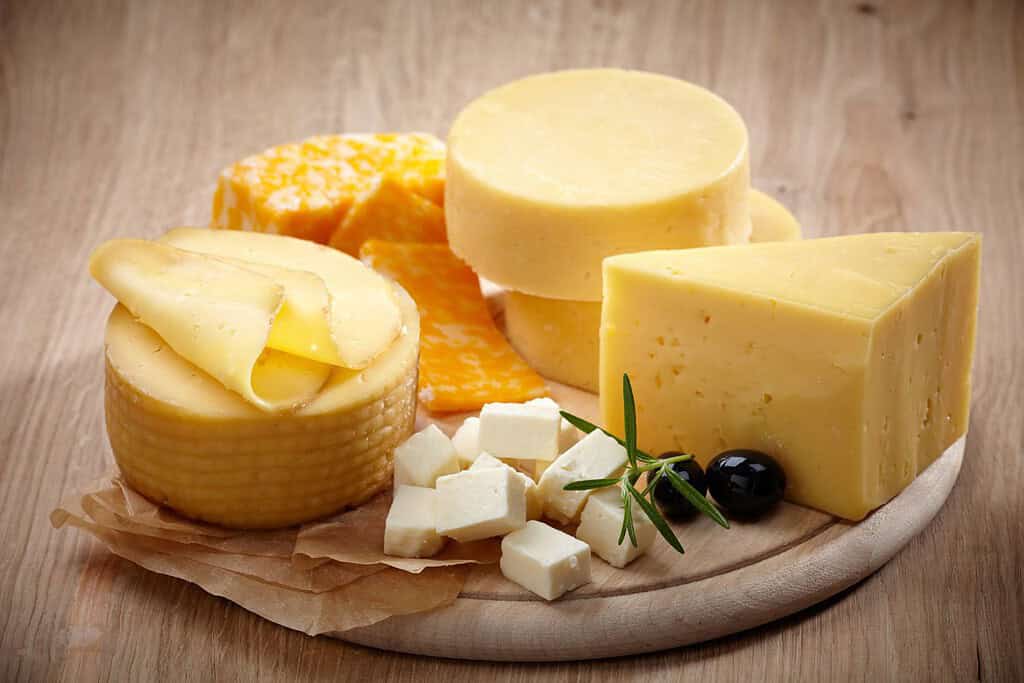
Cheese (Datsi): Cheese is an essential part of Bhutanese cuisine and is used in dishes like Ema Datshi (cheese and chili stew) and Kewa Datshi (potato and cheese stew).

Onions and Garlic: These two ingredients form the base of many Bhutanese dishes, providing a savory foundation to build upon.
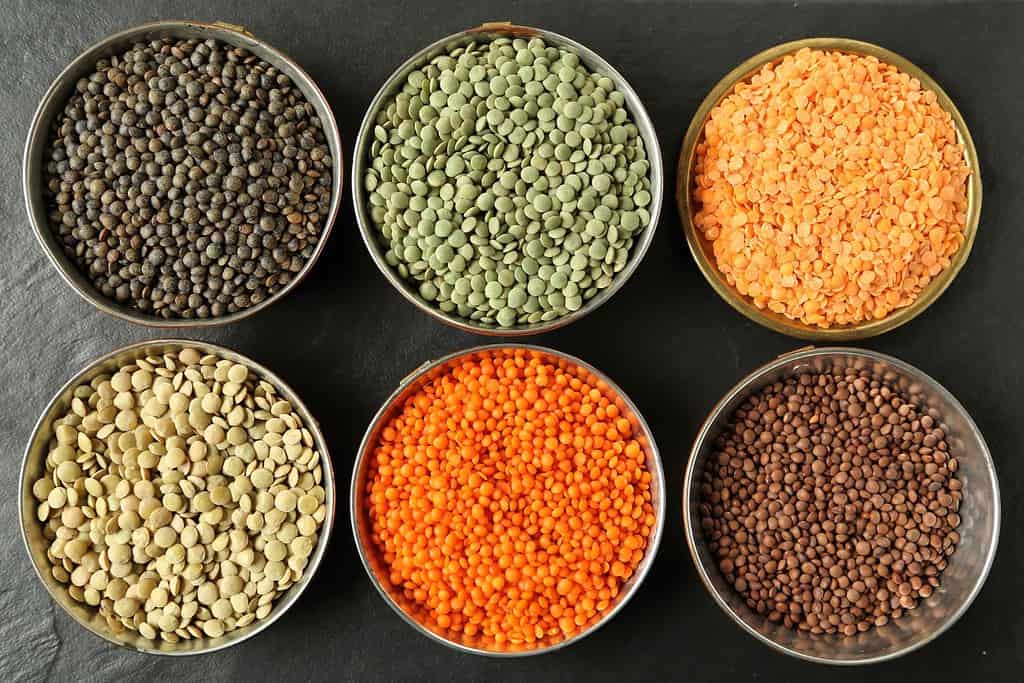
Lentils: Lentils are a versatile ingredient used in soups, stews, and traditional dishes like Hoentay (stuffed dumplings), lending a hearty taste.

Potatoes: Potatoes are frequently used in Bhutanese cuisine to add substance to stews, curries, and dishes like Phaksha Paa (pork with spicy sauce).

Chilies: Bhutanese cuisine is known for its love of chilies, which are used in abundance to add spiciness and flavor to various dishes.

Cilantro: Fresh cilantro is a popular herb in Bhutanese cuisine, used to add a refreshing and aromatic touch to salads, chutneys, and rice-based dishes.

Buckwheat: Buckwheat is a significant part of Bhutanese meals, and buckwheat noodles (puta) are a common type, served with sauces and curries.
These ingredients, along with a variety of herbs, spices, and other regional produce, contribute to the diverse and captivating flavors found in food in Bhutanese culture.
The variety of food from Bhutanese cuisine
Bhutanese cuisine boasts a captivating variety of flavors and dishes that reflect the nation’s rich history and cultural diversity. Influenced by Tibetan, Indian, and Himalayan culinary traditions, Bhutanese food offers a unique blend of ingredients and techniques. One of the most renowned dishes is Ema Datshi, a spicy and cheesy concoction made with chili peppers and a creamy cheese sauce. This dish epitomizes Bhutanese hospitality and is often served at celebratory events. Another beloved Bhutanese specialty is Momos, delicate steamed dumplings filled with seasoned ground meat and vegetables, served with a fiery dipping sauce.

The heartiness of Bhutanese cuisine is exemplified in its grilled Phaksha Paa, prepared with tender pieces of pork, dried chilies, and radishes, all cooked in a flavorful broth. The country’s love for stews is evident in Pho, a savory mixture of beef, vegetables, and an assortment of spices, often accompanied by rice or noodles. For a vegetarian option, Ema Datshi with red rice stands out, featuring chili peppers and cheese served with the staple Bhutanese red rice. Another popular choice is Hoentay, a stuffed dumpling filled with cheese, spinach, or mushrooms, offering a delightful texture and flavorful experience.
Satisfying the sweet tooth, Bhutanese cuisine presents delightful desserts like Goen Hogay, a sweet and sour cucumber salad, and Singye Datsi, a spicy dish made with sliced chilies and cheese. The diversity of Bhutanese food is further exhibited in its regional specialties, with each area showcasing distinct recipes and culinary techniques. Whether indulging in the fiery flavors of Ema Datshi or relishing the comforting taste of Momos, exploring the variety of Bhutanese cuisine is an adventure in cultural richness and gastronomic pleasure.
While visiting beautiful Bhutan, you can try all of the best recipes from Bhutanese cuisine. We have available a wide range of tours in Bhutan that you can choose to explore the country’s culinary delights.
Best foods in Bhutan
Bhutan’s best foods offer a delightful array of dishes that tantalize the taste buds with their rich flavors and cultural significance. While it’s challenging to single out a definitive list of the “best” foods, some dishes stand out as particularly beloved and iconic in Bhutanese cuisine.

Bhutanese cuisine is known for its creative use of spices, such as cumin, coriander, cardamom, turmeric, cloves, cinnamon, ginger, garlic, chilies, saffron, black pepper, and dried mint for its rich and flavorful dishes. The result is a harmonious blend of aromatic spices and vibrant herbs that make Bhutanese food truly exceptional.
Most famous Bhutanese foods
Here are the top most famous foods in Bhutan that have garnered recognition both locally and internationally:

Ema Datshi: Often considered the national dish of Bhutan, Ema Datshi is a spicy and flavorful dish made with chili peppers and cheese. It exemplifies Bhutanese cuisine’s love for heat and dairy, creating a harmonious blend of flavors that’s cherished by locals and adventurous eaters alike.

Momos: A symbol of Bhutanese hospitality, Momos are delicate steamed or fried dumplings filled with spiced ground meat (often yak, pork, or beef) and vegetables. They are typically served with a chili sauce, creating a delightful explosion of flavors.
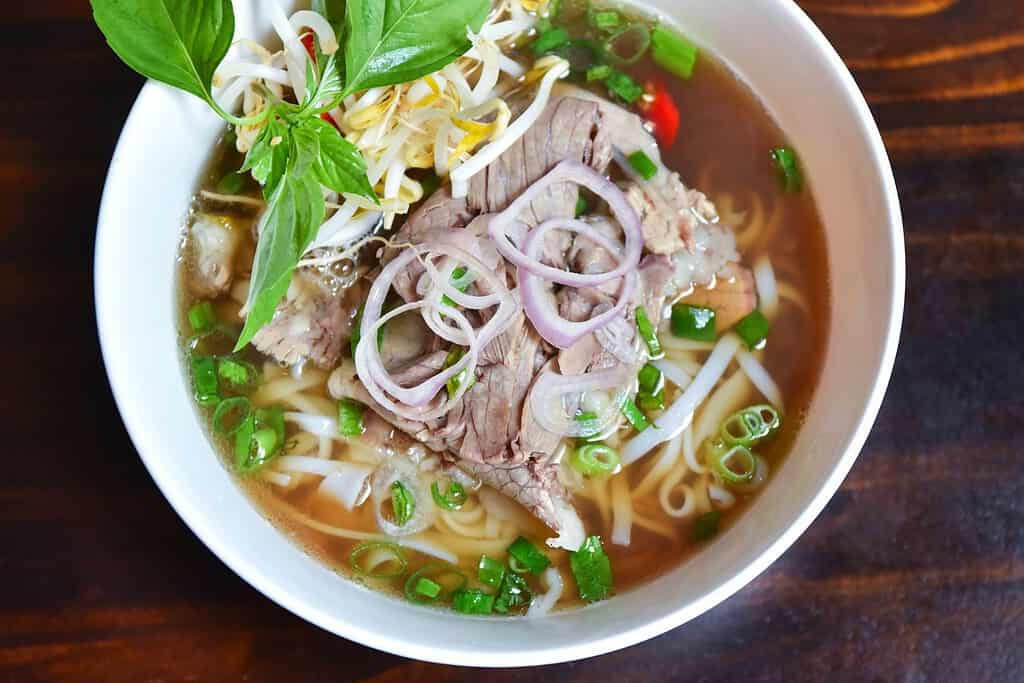
Pho: A staple in Bhutanese households, Pho is a hearty and nourishing noodle soup prepared with meat (often beef or chicken), vegetables, and a variety of aromatic spices. It’s typically enjoyed with red rice and the regional variations in recipes add to its allure.
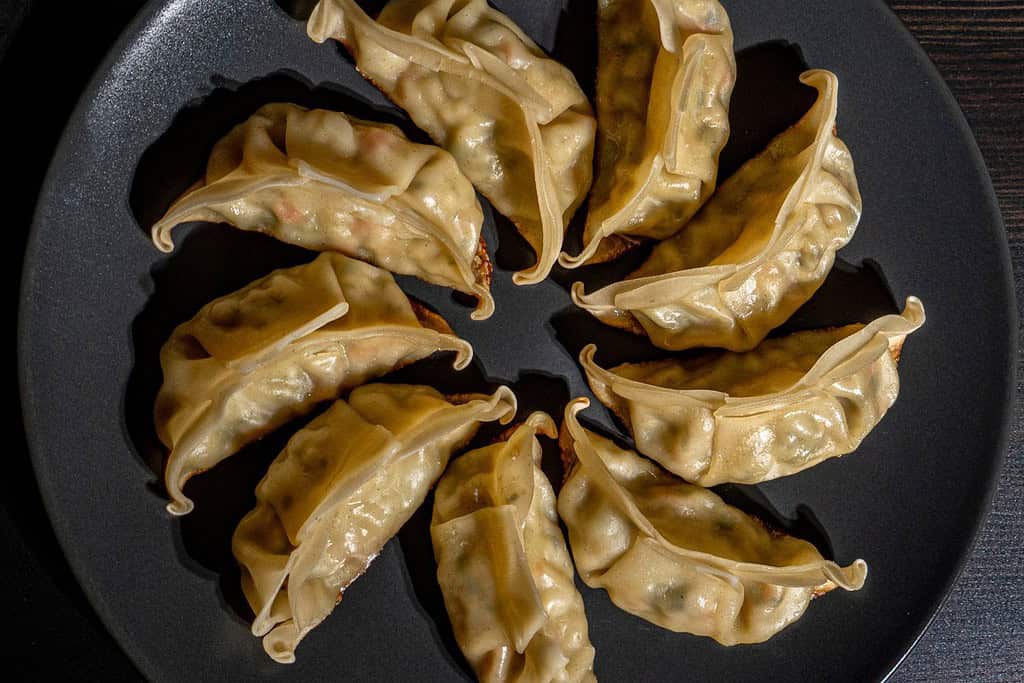
Hoentay: Hoentay is a mouthwatering stuffed dumpling made with buckwheat dough and filled with ingredients like turnips, spinach, and cheese. These dumplings are often served with a spicy tomato sauce, creating a unique and satisfying taste.

Jasha Maru: A spicy chicken stew called Jasha Maru is a favorite in Bhutan, prepared with tender pieces of chicken cooked in a flavorful sauce with tomatoes, onions, and green chilies. It’s usually enjoyed with red rice and adds a kick of spice to Bhutanese cuisine.
These renowned Bhutanese dishes showcase the bold flavors and distinctiveness of the country’s culinary heritage, making them popular not only within Bhutan but also among food enthusiasts worldwide.
Bhutanese Desserts
Bhutanese desserts provide a delightful ending to a satisfying meal, featuring a fusion of sweet flavors and delicate textures. These desserts hold deep significance in Bhutanese culture and are typically savored during festivities, cultural events, and special gatherings. Some popular Bhutanese desserts include:

Thukpa: This is one of Bhutan’s most cherished desserts, particularly during important celebrations. Thukpa is a creamy rice pudding prepared with milk, sugar, and a variety of nuts like cashews, almonds, and dates. The combination of creamy milk and the richness of dried fruits makes it an indulgent treat.
The Culture behind the Bhutanese food
Bhutanese cuisine is deeply rooted in tradition, community, and hospitality. It reflects Bhutan’s unique history and cultural influences, combining elements from Tibetan, Indian, and Chinese culinary traditions. Food holds great cultural significance in Bhutan and is a focal point in social gatherings, family gatherings, and religious festivities.
Hospitality is a fundamental pillar of Bhutanese culture, and the act of sharing food with guests is a cherished tradition. When visitors arrive at a Bhutanese home, they are warmly greeted with a variety of delectable dishes, symbolizing the host’s generosity and their sincere desire to make guests feel at ease. Meals are often communal experiences, with everyone gathered around a shared table, highlighting the importance of togetherness and solidarity in Bhutanese culture.
Also, read:
Thimphu, Paro, and Phuentsholing

Embark on a flavorful journey through Thimphu, Paro, and Phuentsholing in Bhutan and immerse yourself in the captivating tastes that have been crafted and cherished for generations. Let the traditional foods of each city paint a delicious picture of Bhutan’s culinary tapestry, inviting you to savor the unique delights of these remarkable regions.
Within the enchanting world of Bhutanese cuisine, each region brings its own distinct flavors and culinary traditions. Let’s explore the delightful differences in their traditional foods.
The variations in dishes from each Bhutanese city can be attributed to a combination of factors, including geography, historical influences, and the majority ethnic group residing in each region. Bhutan’s diverse landscape, featuring lush valleys, high mountains, and dense forests, has influenced the availability of certain ingredients and agricultural practices in different regions. This has, in turn, contributed to variations in the types of dishes that have evolved in each city.
Thimphu’s Ema Datshi showcases the bold flavors of Bhutan, with fiery chili peppers and melted cheese, providing a memorable culinary experience. Paro’s Phaksha Paa offers a delightful twist with tender pork cooked alongside flavorful spices and dried chili peppers, creating a mouthwatering dish. Phuentsholing’s Momos, on the other hand, are delectable dumplings filled with a variety of ingredients, showcasing the city’s diverse culinary influences.
For example, in Thimphu, as the capital and a cultural hub, the culinary scene is more diverse and influenced by a mix of traditions from various regions. Paro, nestled in the stunning valleys of Bhutan, has culinary influences from the region’s natural bounty, resulting in hearty and flavorful dishes like Phaksha Paa. In Phuentsholing, the proximity to neighboring countries like India contributes to the culinary diversity, with Momos being a popular snack that reflects these influences.
Comparing the three cities, Thimphu offers a wide range of dishes influenced by its cosmopolitan nature, Paro highlights hearty meat-centric preparations using local ingredients, and Phuentsholing tantalizes with delightful dumplings influenced by neighboring cuisines. Each city showcases its own culinary identity, adding depth to the multifaceted and rich tapestry of Bhutanese cuisine.
Thimphu
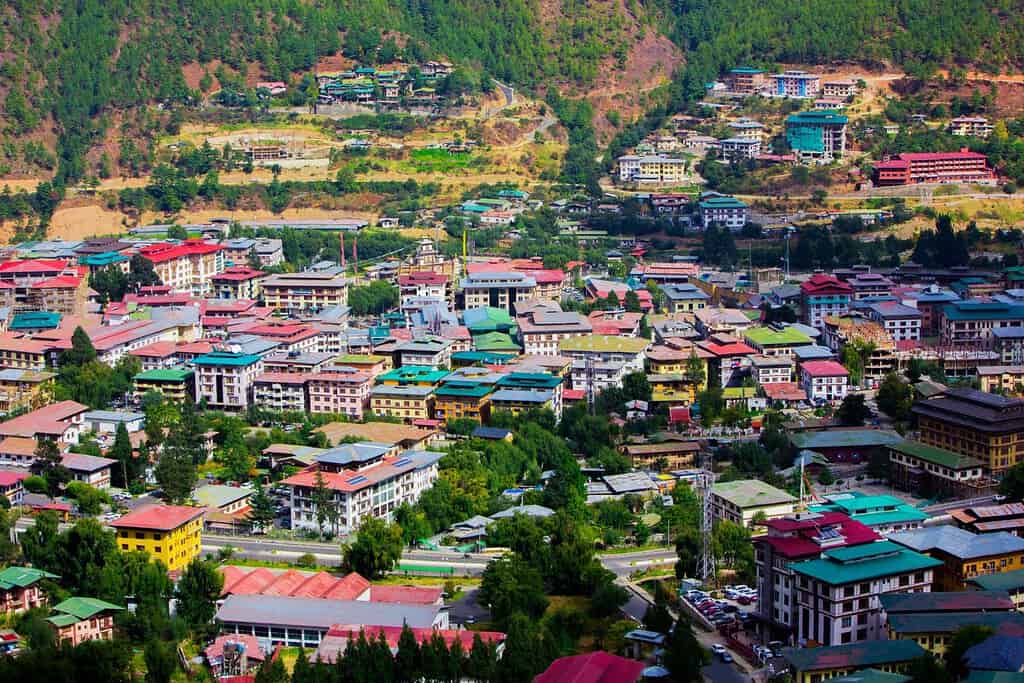
Our journey begins in Thimphu, the capital city of Bhutan. Thimphu’s food scene reflects the nation’s cultural diversity and offers a blend of traditional Bhutanese dishes and international flavors. As you explore the city’s markets and eateries, you’ll be enticed by the aroma of freshly prepared dishes and the warmth of Bhutanese hospitality.
Famous food from Thimphu
- Ema Datshi: A spicy and flavorful dish made with chili peppers and melted cheese, a quintessential Bhutanese favorite.
- Phaksha Paa: Tender pork stir-fried with dried chili peppers and aromatic spices, a hearty and satisfying dish.
- Momos: Delightful dumplings filled with various ingredients, often served with a dipping sauce, showcasing Bhutan’s diverse culinary influences.
- Shamu Datshi: A comforting soup with mushrooms and cheese, a popular choice for Bhutanese comfort food.
Paro

Continuing our culinary adventure, we arrive in Paro, a picturesque valley in Bhutan known for its stunning landscapes and rich culinary traditions. Paro’s cuisine emphasizes locally sourced ingredients and hearty meat-centric preparations, making it a delightful stop on our journey.
Famous food from Paro
- Phaksha Paa: As in Thimphu, this dish is a Paro specialty, featuring pork cooked with fiery chili peppers and aromatic spices.
- Hoe: A unique Bhutanese raw beef salad, marinated with spices and herbs, offering a bold and refreshing flavor.
- Suja: A traditional Bhutanese butter tea, often served as a welcoming beverage to guests.
- Kewa Datshi: A comforting potato and cheese stew, showcasing Bhutanese flavors and ingredients.
Phuentsholing

Our culinary exploration concludes in Phuentsholing, a vibrant border town in Bhutan influenced by neighboring countries like India. Here, you’ll find a delightful fusion of Bhutanese and Indian flavors, offering a taste of regional diversity.
Famous food from Phuentsholing
- Momos: As in Thimphu, Phuentsholing boasts delicious momos, showcasing the influence of neighboring cuisines.
- Chowmein: Stir-fried noodles with vegetables and your choice of protein, reflecting the Indian-Chinese fusion popular in the region.
- Phaksha Paa: Similar to other Bhutanese cities, Phuentsholing offers this spicy pork dish as a staple, appreciated for its bold flavors.
- Thukpa: A hearty noodle soup with vegetables and spices, influenced by Indian and Tibetan culinary traditions.
Book Your Trip to Bhutan Today!
Embark on an unforgettable journey and explore the allure of Bhutan through our exclusive tours.
More About Bhutan
[the-post-grid id=”50343″ title=”Bhutan Main page”]
